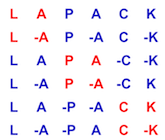 |
LAPACK 3.12.1
LAPACK: Linear Algebra PACKage
|
 |
LAPACK 3.12.1
LAPACK: Linear Algebra PACKage
|
| double precision function zlantr | ( | character | norm, |
| character | uplo, | ||
| character | diag, | ||
| integer | m, | ||
| integer | n, | ||
| complex*16, dimension( lda, * ) | a, | ||
| integer | lda, | ||
| double precision, dimension( * ) | work ) |
ZLANTR returns the value of the 1-norm, or the Frobenius norm, or the infinity norm, or the element of largest absolute value of a trapezoidal or triangular matrix.
Download ZLANTR + dependencies [TGZ] [ZIP] [TXT]
!> !> ZLANTR returns the value of the one norm, or the Frobenius norm, or !> the infinity norm, or the element of largest absolute value of a !> trapezoidal or triangular matrix A. !>
!> !> ZLANTR = ( max(abs(A(i,j))), NORM = 'M' or 'm' !> ( !> ( norm1(A), NORM = '1', 'O' or 'o' !> ( !> ( normI(A), NORM = 'I' or 'i' !> ( !> ( normF(A), NORM = 'F', 'f', 'E' or 'e' !> !> where norm1 denotes the one norm of a matrix (maximum column sum), !> normI denotes the infinity norm of a matrix (maximum row sum) and !> normF denotes the Frobenius norm of a matrix (square root of sum of !> squares). Note that max(abs(A(i,j))) is not a consistent matrix norm. !>
| [in] | NORM | !> NORM is CHARACTER*1 !> Specifies the value to be returned in ZLANTR as described !> above. !> |
| [in] | UPLO | !> UPLO is CHARACTER*1 !> Specifies whether the matrix A is upper or lower trapezoidal. !> = 'U': Upper trapezoidal !> = 'L': Lower trapezoidal !> Note that A is triangular instead of trapezoidal if M = N. !> |
| [in] | DIAG | !> DIAG is CHARACTER*1 !> Specifies whether or not the matrix A has unit diagonal. !> = 'N': Non-unit diagonal !> = 'U': Unit diagonal !> |
| [in] | M | !> M is INTEGER !> The number of rows of the matrix A. M >= 0, and if !> UPLO = 'U', M <= N. When M = 0, ZLANTR is set to zero. !> |
| [in] | N | !> N is INTEGER !> The number of columns of the matrix A. N >= 0, and if !> UPLO = 'L', N <= M. When N = 0, ZLANTR is set to zero. !> |
| [in] | A | !> A is COMPLEX*16 array, dimension (LDA,N) !> The trapezoidal matrix A (A is triangular if M = N). !> If UPLO = 'U', the leading m by n upper trapezoidal part of !> the array A contains the upper trapezoidal matrix, and the !> strictly lower triangular part of A is not referenced. !> If UPLO = 'L', the leading m by n lower trapezoidal part of !> the array A contains the lower trapezoidal matrix, and the !> strictly upper triangular part of A is not referenced. Note !> that when DIAG = 'U', the diagonal elements of A are not !> referenced and are assumed to be one. !> |
| [in] | LDA | !> LDA is INTEGER !> The leading dimension of the array A. LDA >= max(M,1). !> |
| [out] | WORK | !> WORK is DOUBLE PRECISION array, dimension (MAX(1,LWORK)), !> where LWORK >= M when NORM = 'I'; otherwise, WORK is not !> referenced. !> |
Definition at line 138 of file zlantr.f.